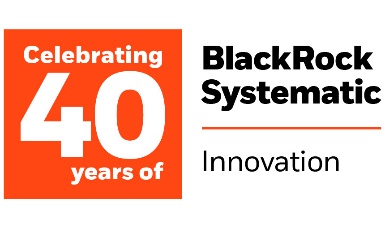As markets transition from euphoric optimism to bearish pessimism, investors face a growing array of risks. Some of these risks may be fleeting, while others may have enduring impacts on investor returns. Drawing on our four decades of systematic investing experience, we understand that consistently achieving even modest amounts of differentiated alpha during these periods can greatly improve long-term outcomes for our clients.
While ambitious objectives like outperforming benchmarks by 5% to 10% consistently is rare, research shows that through disciplined risk management, investors can reliably add 1% to 2% alpha over time.1 Our role as systematic investors is to innovate continuously to find new ways to generate risk-controlled alpha, deliver uncorrelated sources of returns for portfolios, and offer investment solutions that help clients achieve more stable and predictable outcomes, particularly amid bouts of increased market uncertainty.
Achieving sustained, consistent returns requires constant innovation and reinvention of our alpha sources. Today, both the art and science of investing have evolved significantly to keep pace with new technologies that have disrupted traditional consumer behavior, business models, and global markets. This evolution demands continuous exploration of new data sources and advanced analytical methods to gain an investment edge through real-time market insights.
When I joined BlackRock’s Systematic team over 20 years ago, the data we used could fit on a single smartphone that we use today. At that time, we primarily focused on valuation, earning quality and momentum insights which we call smart beta factors today. Today, with widespread access to powerful technologies like machine learning and large language models (LLMs), we manage portfolios leveraging thousands of data sets and signals. The past two decades have been transformative for the investment community, reflective of the profound influence technology has had on markets and investors.
Instantaneous analysis of huge, diverse data sets

For illustrative purposes only.
As an example, 15 years ago, sentiment analysis was a somewhat rudimentary undertaking. We relied on a "bag of words" approach that identified positive and negative words within texts to gauge sentiment. While novel at the time, this method struggled to capture the nuances and complexities of human language, limiting its effectiveness.
Today, the landscape has transformed with the advent of LLMs. These models are not only more powerful but also context-aware, enabling them to interpret subtle nuances and read between the lines in text. This advancement has significantly enhanced the accuracy and depth of sentiment analysis, allowing for more sophisticated understanding of emotions and opinions expressed in language.
The volume and velocity of news generated daily is staggering, with over 500,000 headlines produced each year. This flood of data and information is ideally suited for AI-driven analysis. By categorizing news into macroeconomic, microeconomic, fundamental, and sentiment categories, AI can process and analyze all this available data in real time. This instantaneous analysis offers invaluable insights into market trends and investor sentiment, to help make more informed investment decisions.
One of the most exciting applications of AI in investing is its ability to generate actionable investment recommendations. By analyzing news, broker reports, and regulatory filings, AI systems can now suggest baskets of both long and short portfolio positions. This process is automated yet interactive, allowing users to query the rationale behind specific recommendations, enhancing both the transparency and trust of these systems.
The concept of a "stock selection agent" is becoming more of a reality. These AI agents can make informed investment decisions autonomously, representing a key development within the broader "agent economy," where specialized AI agents perform tasks that improve efficiency and decision-making.
Reflecting on our investment edge today, three pillars stand out: big data, big models and big team. Big data involves leveraging diverse alternative data sources beyond traditional financial metrics, allowing us to absorb vast amounts of information to uncover unique insights. Big models refer to the deep, complex algorithms designed to extract meaningful intelligence from these large and intricate data sets. Big team refers to the more than 200 colleagues I work with who focus exclusively on generating new ideas, analyzing new data, and understanding market dynamics daily. Our goal is to combine big data, with big models, and a big team to generate big alpha for our clients.
Data remains the oxygen of our investment process. Each year, we evaluate thousands of data sets, leaving no stone unturned in the search for the next critical investment signal. This relentless pursuit is fundamental to maintaining our competitive advantage.
Simultaneously, technology plays a pivotal role in our endeavor. Today, machine learning and AI are central to our approach, but we remain committed to embracing whatever technological innovations the future may bring.
Finally, scaling investment skill is crucial to sustaining our investment edge. Systematic investing benefits immensely from scale, requiring substantial investment in technology and data infrastructure. However, human intellect remains central to systematic investing. Data scientists, mathematicians and investment professionals provide the essential skill to our process. We believe that all the data and computing power in the world will not generate consistent investment returns without the skill of human experts.
Investment innovation is not merely about following current trends, but also anticipating what lies ahead. The drivers of tomorrow’s markets will differ fundamentally from those of today. What constitutes alpha now may become beta or smart beta in the future. As systematic investors, we believe relentless innovation is the key ingredient to our ability to generate consistent, differentiated results for our clients.
As systematic investors, we believe relentless innovation is the key ingredient to our ability to generate consistent, differentiated results for our clients.



